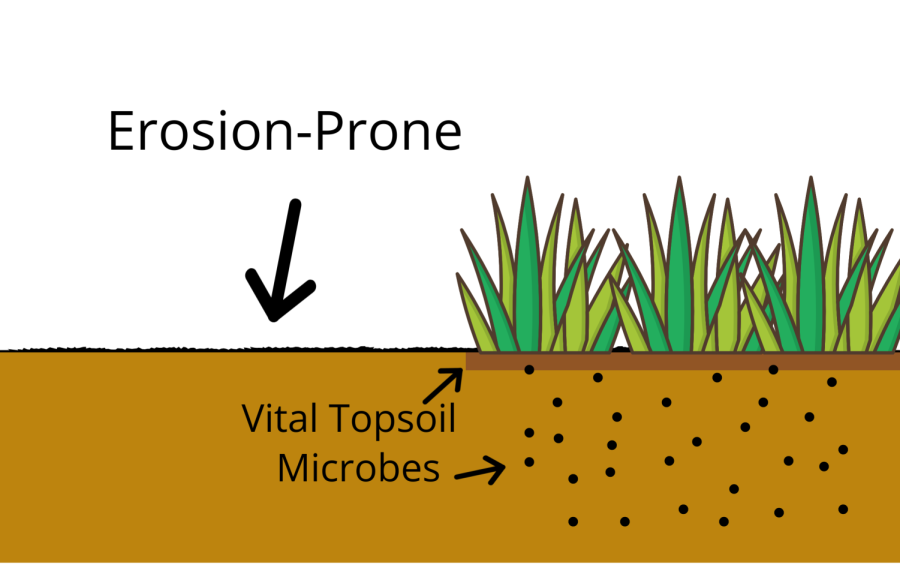What is the future of food?
Despite having visible positive effects, Modern Farming has many invisible effects that could be costly.
Vacant and distrubed fields are highly prone to erosion, significantly decreasing soil health.
When driving through Iowa, Illinois, and Neraska, you will likely see one thing, monoculture fields filled with corn.
GMO corn along with massive farming equipment was heavily introduced in the late 1900’s and has made huge strides for food. Now, one field can create massive amounts of corn from a single field to feed animals and humans. This practice is known as modern farming. But what was not known about modern farming is that it actually harms the environment. The use of tilling discs and synthetic fertilizers are harmful to the soil and the environment. When a modern farmer goes to plant crops in the spring, they will typically run a disk through their fields, then go along and plant either corn or beans, then harvest their crop later in the fall. This is what a large majority of American farmers use to farm their land. But, what they don’t realize is that through tilling their fields, they severely disturb the soil and release carbon into the atmosphere. Modern farming and tilling has an enormous effect on the topsoil.
Typically, crops are planted only from spring to fall. By only having crops in the ground from around June-October, the topsoil of America is exposed and vulnerable to the elements for almost half of the year. This causes extreme amounts of erosion due to wind and rain. The problem with this is that the farmers’ ground gets worse and worse year after year because rich soil is lost.
According to a study by Eric Verso from Stanford University, the United States is losing about 1% of its topsoil every year due to erosion. This may not sound like a lot, but it is eroding at a rate 10% faster than soil replenishment.
Topsoil contains countless microbes and microorganisms that grow the crops and create a healthy ecosystem. It is vital to growing a good crop and getting a consistent yield. Topsoil also contains a vital nutrient to soil, Carbon. Carbon is sequestered in the soil and contributes to the overall soil and ecosystem health. But when one tills or discs the soil, the sequestered carbon is released into the atmosphere, essentially creating a double whammy. The Carbon is not in soil anymore, decreasing soil health, and also releasing carbon into the atmosphere which is a major contributor to global warming.
According to Environment Reports, Agriculture can contribute to 21% of global warming and environmental issues. The carbon released into the atmosphere pollutes the air and harms the environment which is slowly warming the earth. With almost every farm practicing modern farming, the effect compounds very quickly and is becoming a problem. For now, America’s food security is relatively safe. Farmers are still harvesting crops every year and new technology is constantly evolving to help crops grow in worse conditions. But, we can’t determine the future of America’s farming. At the current rate, we are destroying and wasting precious topsoil which is vital to growing crops. So this begs the question, what will food look like in 50 years?




